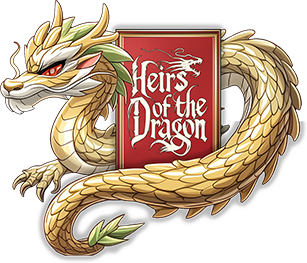Visit Dungeons & Toast
Learn More
District 100 Spring Conference
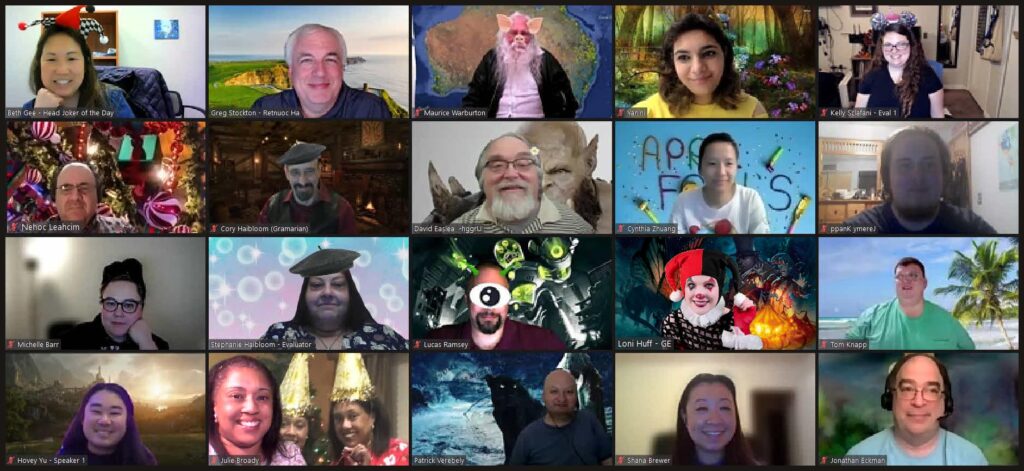
Photos and Video Special Events
April Fool’s Day Fun
Dungeons & Toast used the occasion of April Fool’s Day to celebrate our 1-year anniversary (birthday). To shake things up, we hosted a backwards meeting (a Toastmasters meeting that starts with the evaluation portion and runs backwards to prepared speeches with the goal being excessive silliness). Kudos to Stephanie H and Beth G for co-hosting and to Hovey Y and Maurice W for being such good sports and delivering prepared speeches with all the random mannerisms described by their evaluators earlier in the meeting.
Happy birthday, all, and let’s keep leveling (I hear at year 4 we can choose a feat or an ability score increase)!
Our First Guildaversary!
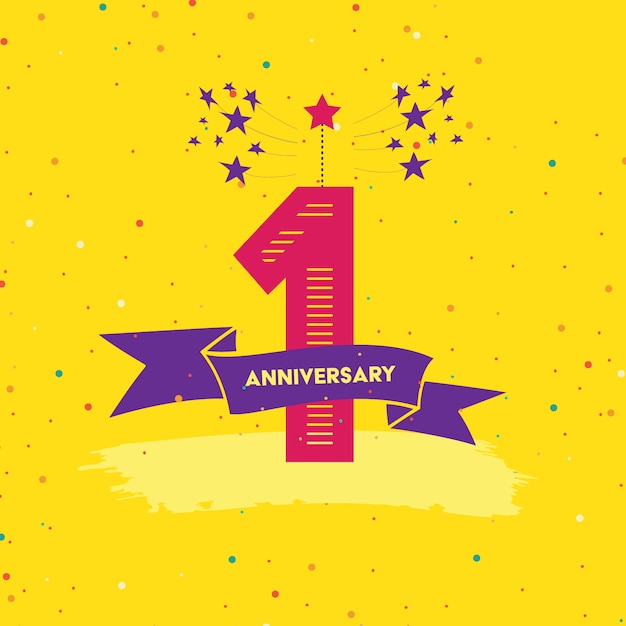
One year ago today, at the conclusion of an epic quest to charter our guild, the sovereign powers of the Masters of Toast realm granted upon the Dungeons & Toast Toastmasters guild (club) the status of being an official guild!

Huzzah!
And what a fun, mirth-filled year it has been! Renowned speakers from across the realm have graced us with their knowledge and wit, we’ve had themed meetings to honor special days from across the realm(s), we raided the council of our district leaders (Division G & S Council), undertaken quests (the District 100 12 Days of Christmas and 26 Week Marathon incentives), we’ve dressed up (cosplay), with more surprises to come from now until the end of this Masters of Toast year (June 30) . . . and beyond!
Thank you to our guild sponsors, guild mentors, guild party leaders, charter guild members, guild members, dignitaries, guest speakers, and guests for making this year of fun possible!
Please join us at our future guild adventures (meetings) to see what fun, action, excitement the Dungeons & Toast guild has in store for you!
Raise your flagons high and drink a toast in honor of the Dungeons & Toast guild’s one-year guildaversary!
Huzzah!
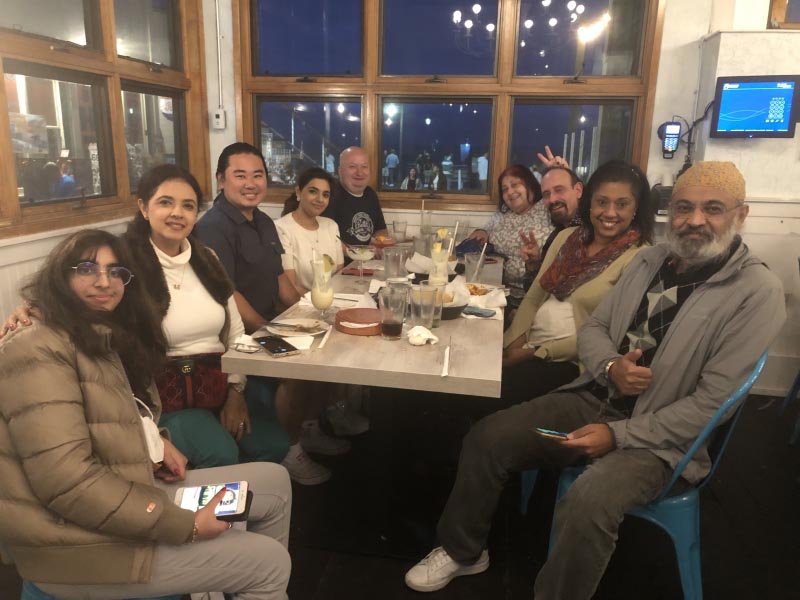
Yanini Visits LA
This past Sunday, local members of various parts of Southern California, gathered at the Santa Monica Pier, the western-most end of the historic Route 66, to receive our fellow club member and Master Scribe Yannika from across the vast Pacific Ocean. This serendipitous meeting marked the first time that club members from different parts of the world were able to meet each other in person. In attendance were Guild Master Patrick V, charter members Stephanie and Cory H, Club Mentor Hovey Y, District Director Julie B, Yannika, and her family.
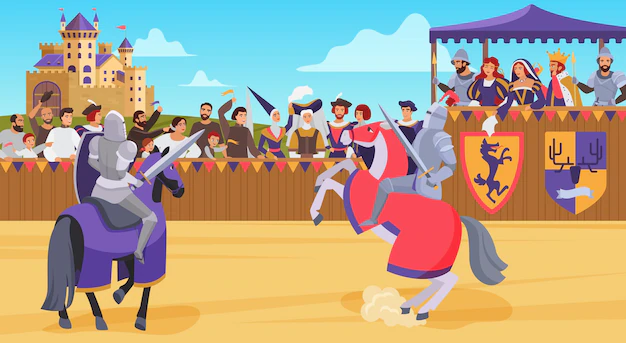
The Guild Championship Run Continues!
Huzzah! The chorus of thunderous voices of the Dungeons & Toast guild members spilled out from the guildhall as our guild members triumphed yet again on the verbal joust field of battle; this time at our lord’s division verbal joust tournaments this Masters of Toast year!
Thank you to Hovey, David, Cynthia, and Loni for coming out to support Kelly and Andrew at our lord’s verbal joust tournaments today!
Guild member Kelly again represented another guild in another tournament and finished in fine fashion, coming in first place and winning a second 
 for herself and said guild! Guild Champion Andrew carried the day and won a second
for herself and said guild! Guild Champion Andrew carried the day and won a second 
 for himself and the Dungeons & Toast guild!
for himself and the Dungeons & Toast guild!
Our lord’s annual medieval fair (District 100 Spring Conference) is 30 days away on April 23! Come see Guild member Kelly and Guild Champion Andrew battle it out in the International Speech verbal joust tournament, along with four other verbal jousters from our district. The winner will be crowned the District Champion in the International verbal joust tournament and will go on to the next level of the verbal joust tournament. You can register for our lord’s annual medieval fair (District 100 Spring Conference) here: https://bit.ly/D100SpringConference2022
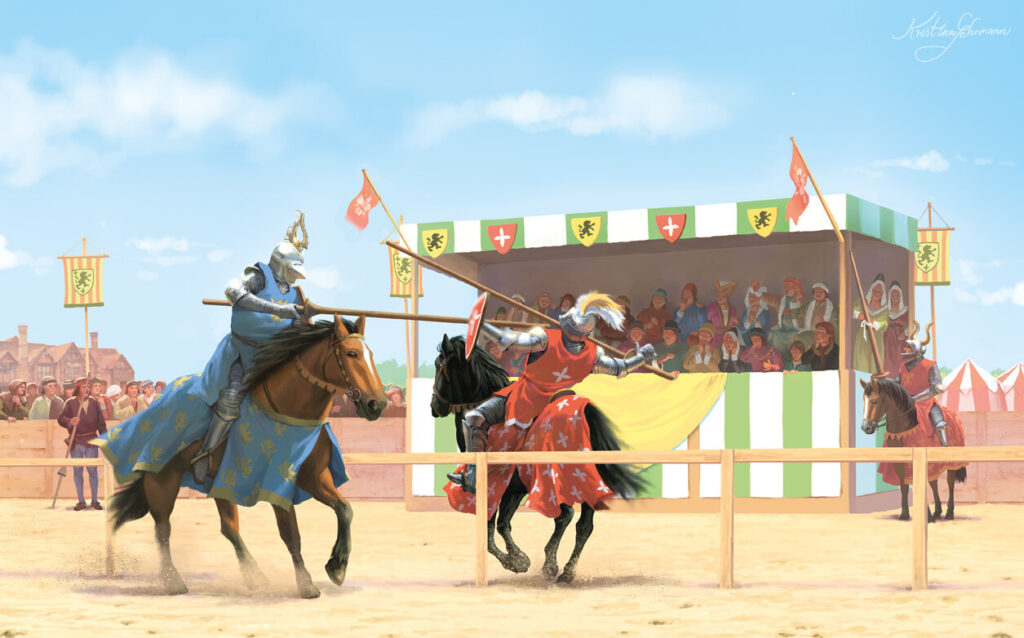
Guild Champions!
With a hearty huzzah, the Dungeons & Toast guild welcomes back our verbal joust champions who have returned victorious from our lord’s area verbal joust tournaments this Masters of Toast year!
Thank you to Hovey and David for attending the tournaments on March 12 to support our champions, Arbind who triumphed and won a 
 in the Evaluation verbal joust tournament, and Andrew who prevailed and won the
in the Evaluation verbal joust tournament, and Andrew who prevailed and won the 
 in the International verbal joust tournament for our guild!
in the International verbal joust tournament for our guild!
Although she competed for a different guild in a different tournament, guild member Kelly succeeded and won a 
 for said guild in the International verbal joust tournament!
for said guild in the International verbal joust tournament!
Guild member Beth won a 
 in the Evaluation verbal joust tournament for a different guild in a different verbal joust tournament.
in the Evaluation verbal joust tournament for a different guild in a different verbal joust tournament.
Guild members Cliff and Yanini earned recognition for organizing area verbal joust tournaments last Saturday for our lord’s verbal joust tournament.
Congratulations champions one and all! 
Come out on March 26 and support Andrew (in Division G) and Kelly (in Division L) as they progress to the next level in their quests at our lord’s division verbal joust tournaments.
Photos and Video Special Events
St. Patrick’s Day 2022 Celebration
On Friday night we hosted a belated St. Patrick’s Day celebration, themed “Luck o’ the Irish.” Member and Recruitment Master (VPM) Andrew delivered the first of two social speeches from the Visionary Communication Pathway’s elective selection, entitled “A Dungeons & Toast, Toast” in the style of an Irish Blessing (full text below):
Fellow guildmembers and esteemed guests, please… raise your tankards, glencairns, snifters, steins, boots, or whatever drinking receptacles you have chosen to use on this fine evening.
Friends, may the chests in your dungeons never be mimics,
And if they be mimics, may they stay in the secret shadows, undiscovered by your party,
And may your party be filled with creative roleplayers, not murderous hobos, but if you must play with murderous hobos, I pray they be the kind that will share only the finest food and drink with you in real life so as to distract from any shortcomings you may experience in your campaign,
I hope your checks never fail and you never fail to hit, but should you deign to fail, I implore you not do so on your final death save,
And speaking of failure, may your creative ideas only bring wealth and victory to your party, but should your idea fail, may it fail so spectacularly, you earn inspiration and a retcon because really, who “shoots the hostage?”
My friends. Never shoot the hostage.
Finally, may your glasses be filled with only the most enjoyable of libations, but not so enjoyable that one forgets that the most delicious of drink, is the one that is consumed in fine company, like the company we see here today.
Slainte Mhath!
I was honored to serve as Table Topics Master which I did while doing my best leprechaun impression. Participants included Matthew K, Beth G, Stephanie H, Cynthia Z, and Andrew B.
Thanks to all who joined us, and I look forward to seeing you all again for our next regular meeting on April 1st when I’m sure there will be no shortage of shenanigans to be had.
D&T Presents: Sean K Reynolds
Dungeons & Toast hosted a special open house event featuring author and game creator Sean K. Reynolds on February 21st. Sean spoke specifically about his work on the 3rd edition Forgotten Realms campaign setting and the deliberate approach taken to avoid interfering with gamemaster’s long-standing plans for specific NPCs.
You can follow Sean on Twitter here.
We Stuck the Landing!
In an impressive display, led by Quest Master (Vice President Education) Greg S., the Dungeons & Toast Toastmasters club achieved ten out of ten Distinguished Club Program goals on February 11, 2022! This is just shy of 7.5 months into the 12 month Toastmasters International year! Congratulations, Greg, on a job well done! Thou art truly a master of your craft! Congratulations to the Dungeons & Toast Toastmasters club–and a hearty thank you to all of the club members–for the accomplishment of this supreme feat in such a short amount of time! Huzzah!
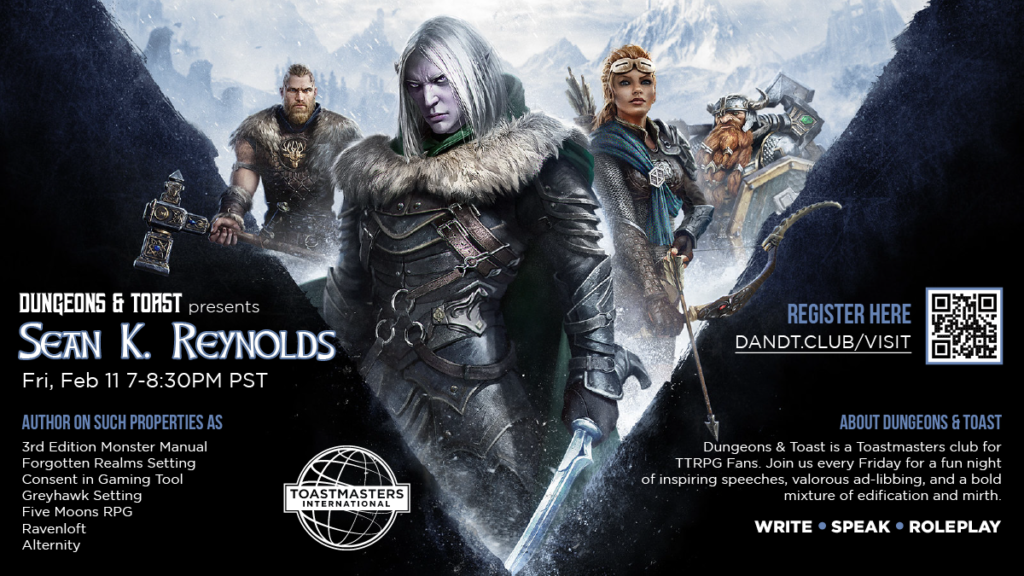
The Guild Horn is Sounding! We Need Your Help!
Hello fellow Dungeons & Toast guild members. I hope that you have seen the awesome news that we’ve got Sean K. Reynolds visiting our Open House and delivering the keynote for the evening. We’d love to fill the room with guests and wanted to share some easy ways for you to do so. You can share the image on your social media and we’ve even taken the liberty of drafting up some generic text you can use for the post:
My Toastmasters club, Dungeons & Toast, is having an Open House on February 11. We have an exciting guest speaker, Sean K. Reynolds (an amazing game designer) who will be giving the keynote of the evening. If you like gaming or just want to enjoy a fun night of storytelling and creative speaking, please visit! Sign up at www.dungeonsandtoast.com and click “Visit.” #D100
Would you prefer/be willing to send a personal email, well we’ve got you covered there too!
Hey <Name>-
I wanted to invite you to an Open House for a club I’m a part of, Dungeons & Toast. It’s been a wonderful experience for me and has helped me become not only a better speaker but also a more creative person in general. I feel like it’s something you’d enjoy and we’ve got Sean K. Reynolds speaking who has a lot of experience with game design.
It’d be great if you would be willing to come check it out.
Don’t worry, you won’t have to speak if you don’t want to. And there is no pressure to join. I just thought you might enjoy it – it’s a lot of fun!
If you’d like to attend the Open House, you can register at www.DungeonsandToast.com and click “Visit.” I hope you’ll be able to make it!
<Signature>
Please share with your friends, family, colleagues… It’s always more fun to game with other people. 🙂
